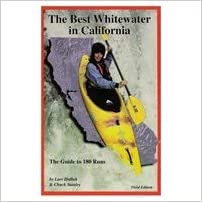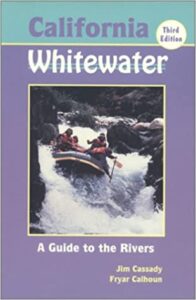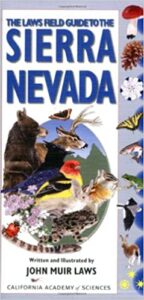Cherry Creek Rafting Overview
Cherry Creek rafting trips are considered one of the classic, most challenging whitewater experiences in the world. Over 8 miles of the run is actually on the Upper Tuolumne River. However, it’s name, Cherry Creek, comes from the 3/4 of a mile of “the Creek” paddlers typically run before it meets with the Tuolumne River.
Fun, big rapids with consistent summer flows and easy access makes this a great weekend run. Gaining wild and scenic river status in 1984 the canyon is quite scenic if you are relaxed enough to enjoy the views. The river action is non-stop requiring boaters to always be focused in the present. Above 2000 cfs kayakers find the holes much more sticky and rafters can find things get out of control quickly.
While there are many big rapids. Four stand out: Mushroom, Lewis’s Leap, Flat Rock Falls and Lumsden Falls. Most people run the first two and many walk/portage the final two. Be sure to wear good rafting footwear for this trip.
Holm Powerhouse to Meral’s Pool
__________
Length: 9 miles/ 1 day
Class: V (1+ portage)
Gradient: 100 ft/mile
Permits: Self-registration at put-in
Season: Summer post Spring runoff
Recommended Flows: 700 to 2000 cfs at Meral’s Pool
Shuttle: 1 hour/ 30 miles
Flow Information: Scheduled Releases
Conditions/Releases
Coming from the bottom of Cherry Creek reservoir, the water is cold so kayakers prefer drytops even in the heat of the California summer. Rafters typically wear farmer john wetsuits to protect from cold and rocky swims.
Summer releases are early which means getting on the water around 7 or 8 am and staying on the 3 hour bubble of water to end up at take-out around noon at Meral’s Pool, the Main Tuolumne River Put-in. Hanging in the shade with a cold drink during the heat of the day after a successful run is a glorious feeling.
Video: Cherry Creek Rafting
Fitness + Physical Requirements
Paddlers must show they are fit enough to handle the rigors of this trip by passing fitness, paddling, and swimming tests prior to running the class V rapids. In addition rafters must weight less than 250 lbs.
The fitness test entail some running around and jumping jacks to ensure everyone has enough agility before getting on the boats. Over the first 3/4 mile everyone is trained and evaluated on their paddling. Finally their is the swim training.
Swim Training
Outfitters have high standards for people wanting to run the river. Commercial Cherry Creek rafting trips require paddlers to complete a swim training where they have to swim across the river into an eddie in fast current. Paddlers then have to swim under the raft. Those unable to complete these tasks hike a trail 3/4 mile back to the put-in with the shuttle driver. Learn more about swimming whitewater rapids.
Cherry Creek Rafting and Kayaking Highlights:
Put-in on Cherry Creek by the kiosk just downstream from Holm Powerhouse. There is an alternative put-in where Cherry Oil Road crosses the Upper Tuolumne River. However, it is typically without water and has a couple of big rapids before reaching the confluence. As of 2019 there is a new boat ramp for rafts and a better path to the water.
Mile 0: Cherry Creek Put-in
Leaving from the Cherry Creek put-in the first mile consists of is junky class IV rapids down to the confluence (mile 1) with the Tuolumne River. From here the rapids get better and much harder. There is a trail that takes you back to put-in on river right if you found the initial stretch challenging.
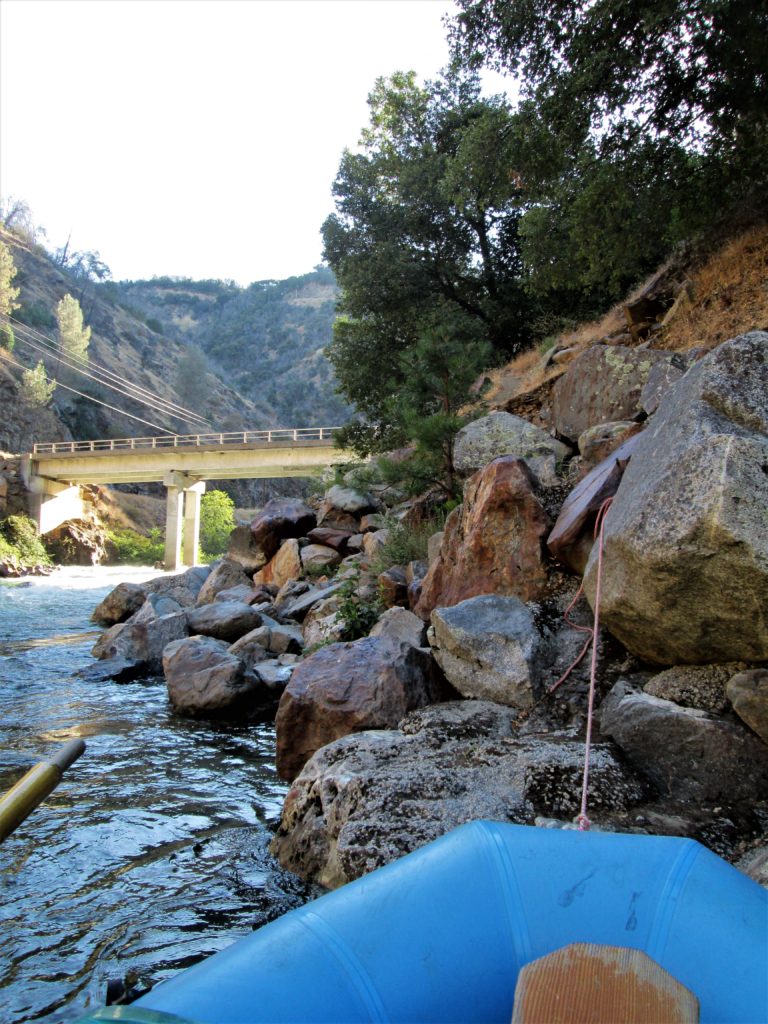
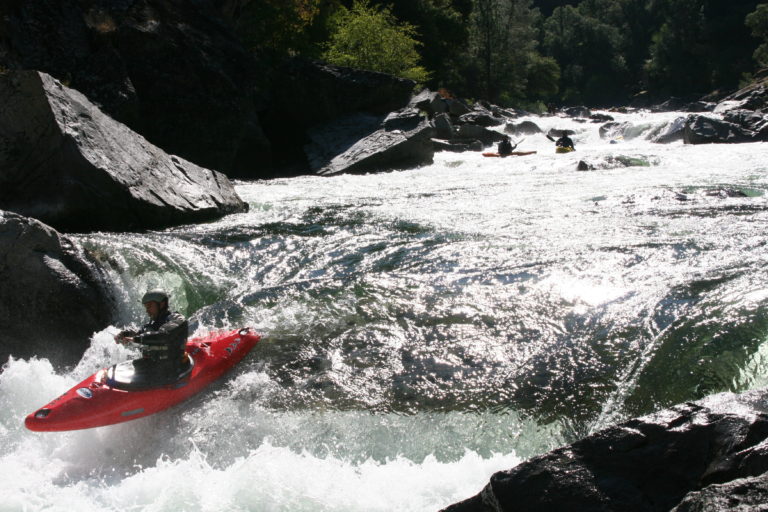
Mile 2: Guillotine and the Screw (V)
From the confluence there is a mile of fun class IV. At the end of the mile the river makes a hard right hand bend in a rapid. Below this is the first Class V rapid with two drops: Guillotine and The Screw also called Corkscrew.
Outfitter Spotlight

Sierra Mac River Trips
First rafting outfitter on Yosemite’s Tuolumne & Merced Rivers & pioneer on the Cherry Creek/Upper Tuolumne. Family run, locally based, mature guides, Tuolumne River specialists for over 50 years! Call us: (209) 591-8027
Mile 2.5: Jawbone Rapid (V)
Below the Screw is another 1/2 mile of class IV. After the river bends hard back to the right is the first big class V, Jawbone Rapid. There is a great view high up on the right of Jawbone Creek cascading down to the river.
Mile 3.2: Mushroom (V)
After Jawbone is about 3/4 mile of class IV. When you get to a pool it’s time to eddy out. Mushroom (V) also called Number 1 is next. The first of 3 rapids that stood out when Marty McDonnel and Walt Harvest first completed this run.
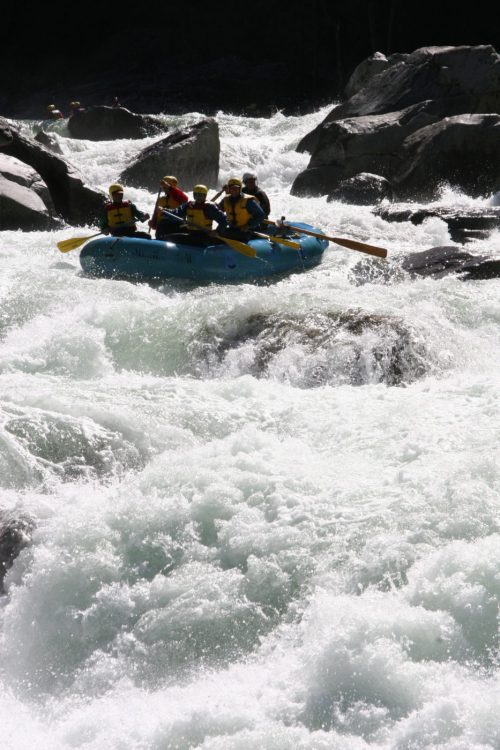
Mushroom has a complicated entrance followed by a technical middle section exiting into a big feature. Kayakers typically enter on the right side of the river and rafters typically enter on the far left. Be sure to eddy out right away with Toadstool looming below.
Mile 3.4: Toadstool (V)
Toadstool is the crux of the run for rafts. They seem to have the most success running the elevator shaft on the left after having caught the high eddy on the left after the first drop – Good Luck!
Kayakers usually drive right above the Toadstool rock through a tight chute and then boof a fun drop.
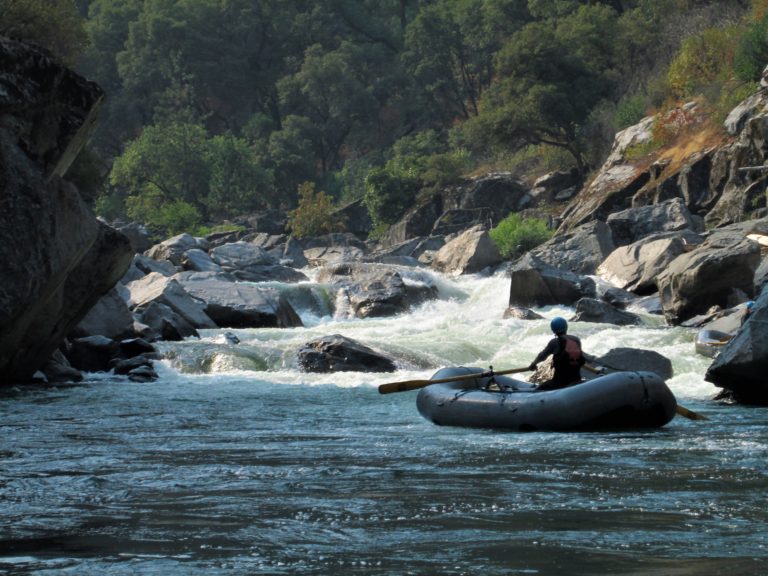
Mile 3.8: Catapult (V)
Below Toadstool there is a mile of class IV rapids. Towards the end of this stretch the river makes a hard turn to the left. A couple hundred yards below this a large rock that blocks most of the channel. This is called Catapult or Unknown Soldier. While it’s tempting to run the right side the narrow slot on the left is the preferred run for most kayaks and rafts.
Mile 4.1 to 5.1: The Miracle Mile (V)
Below here the river gets even more consistent within the Miracle Mile where the river drops 200 feet in a mile causing multiple big rapids: Blind Faith (mile 4.8), Slammer Wave/Sky King (kayakers sometimes portage this drop as a swim takes you through the next rapid, Gar’s Lunch, Eulogy, and Coffin Rock. After a short reprieve there is Christmas Hole. Finally a pool leads to Richards Hole.
Mile 6.4 Lewis’s Leap (V)
When another big pool appears and the river disappears from site is Number 2, Lewis’s Leap. Scout on the right. Most paddlers try to run the big drop on the left halfway down the rapid. Below Lewis’s Leap is an easy rapid and then another pool.
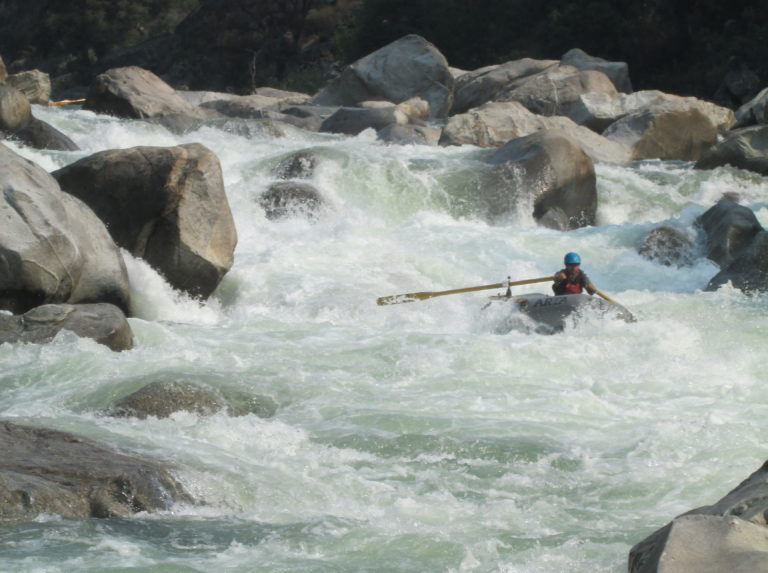
Mile 7.0: Flat Rock Falls (V – Portage)
Number 3, Flat Rock Falls is a big technical rapid that ends with a couple of large undercut rocks. The drop seen between the two rafts lands on a flat rock which has definite entrapment concerns. The drop not in view on river right has also had kayaks stuck in it. There is a nice portage route and good place to scout on river left.
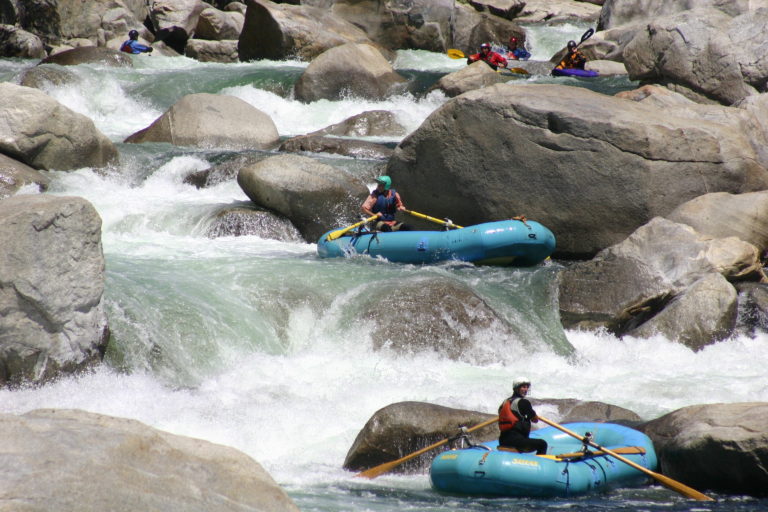
Mile 7: Lumsden Falls (V+)
Below Flat Rock there is a fun drop but you’ll then need to eddy out right away as Lumsden Falls is next. Lumsden is typically portaged or lined on river left. These days it’s run pretty often by kayakers and a few rafters. Watch out for the under cut wall on the bottom right. Kayakers have been know to hit rocks when they swim out of the hole at the bottom. Scout on the right.
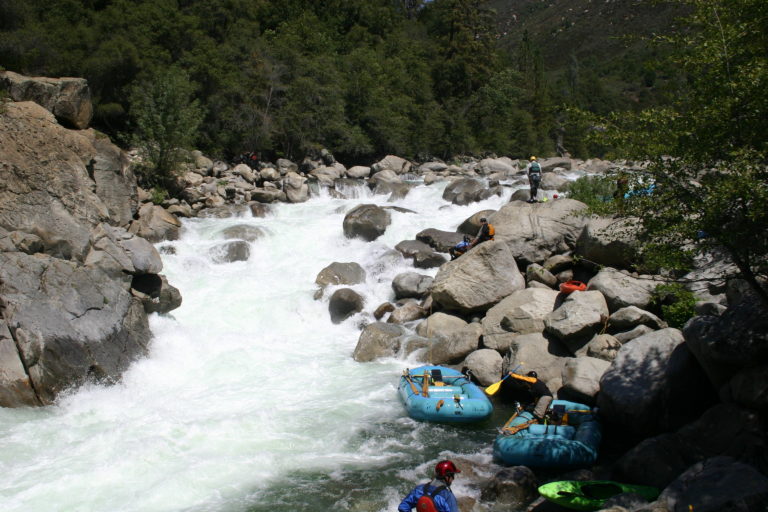
Mile 8.0: Horseshoe Falls (IV+)
Sometimes people will set a shuttle to take-out here. However, most boaters continue another couple of miles to Meral’s Pool (mile 9.0). This section is pretty mellow with one particularly fun rapid with a nice drop on river right, Horseshoe Falls.
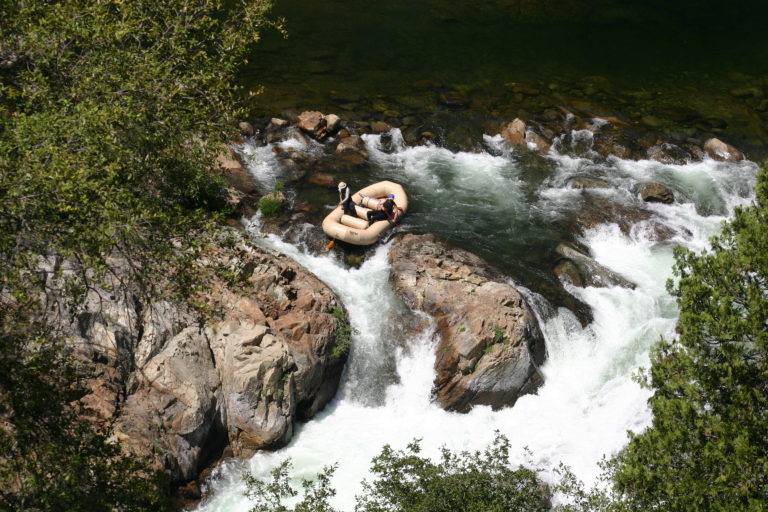
Mile 8.7: South Fork of the Tuolumne
The South Fork Tuolumne flows in here on river left. There is a nice spring time run upstream.
Mile 9.0: Take out – Meral’s Pool
Run Meral’s Table Rapid (IV) and then take-out on river left in the pool below. This is the put-in for the main Tuolumne River run.
